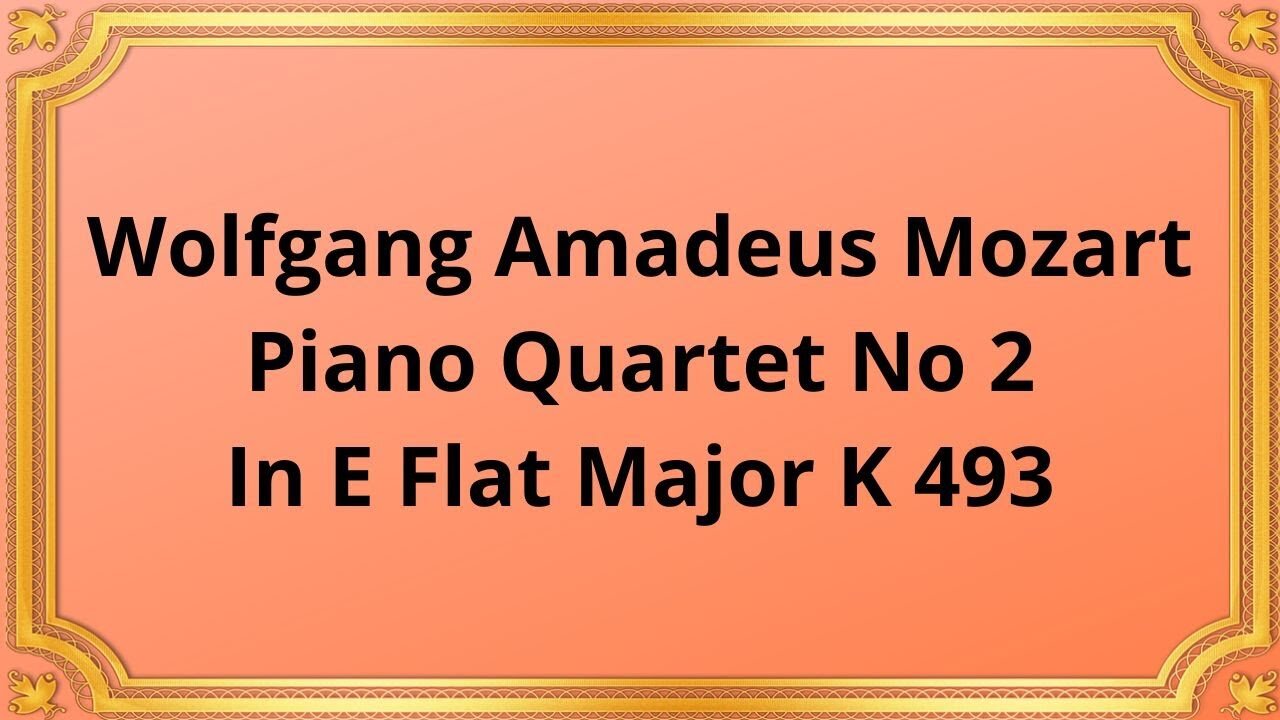Premium Only Content

Wolfgang Amadeus Mozart Piano Quartet No 2 In E Flat Major K 493
#Mozart#Chamber_music#Classical_music#Quartet#Musical_composition
Publication date 1953
CLIFFORD CURZON Pianist, with members of the Amadeus Quartet
Wolfgang Amadeus Mozart was a prolific composer of the Classical era, known for his ability to write in many different genres, including chamber music. One such piece is his Piano Quartet No. 2 in E-flat Major, K. 493, written in 1786.
The piece is scored for piano, violin, viola, and cello, and is in four movements. The first movement, marked Allegro, opens with a bright and lively theme in the piano, which is then taken up by the strings. The music is full of contrasts, with moments of intense energy and moments of peaceful lyricism. The movement also features a brief cadenza for the piano, where the soloist gets to show off their virtuosity.
The second movement, marked Larghetto, is a lyrical and expressive piece, with the violin and cello taking turns with the main melody. The piano provides a delicate accompaniment, adding to the overall sense of intimacy.
The third movement, marked Allegretto, is a light and playful scherzo, with a charming and catchy melody in the piano that is echoed by the strings. The middle section of the movement features a lively trio, with the cello taking the lead.
The final movement, marked Allegretto, is a fast and energetic piece, with a lively and rhythmic theme that is passed around the ensemble. The movement features moments of intense virtuosity for all the instruments, including a thrilling cadenza for the piano near the end.
Mozart's Piano Quartet No. 2 is a masterful example of his ability to write chamber music. The interplay between the four instruments is seamless and engaging, and the music is full of charm, wit, and beauty. It remains a beloved piece in the chamber music repertoire to this day.
In conclusion, Mozart's Piano Quartet No. 2 in E-flat Major, K. 493 is a delightful and engaging chamber music piece that showcases the composer's skill in writing for multiple instruments. Its four movements are full of contrasts, from lively energy to intimate lyricism, and it remains a beloved work in the classical repertoire.
-
 1:30:23
1:30:23
Twins Pod
17 hours agoHe Went From MARCHING With BLM To Shaking Hands With TRUMP! | Twins Pod - Episode 45 - Amir Odom
141K31 -
 1:02:30
1:02:30
Exploring With Nug
19 hours ago $4.20 earned2 Duck Hunters Missing After Kayak Capsizes!
66.2K4 -
 46:48
46:48
Mally_Mouse
12 hours agoLet's Hang!! -- Opening Christmas gifts from YOU!
74.4K1 -
 44:55
44:55
Athlete & Artist Show
20 days ago $2.07 earnedNHL 4 Nations Snubs, Was Hawk Tuah Coin A Scam?
71.1K -
 33:47
33:47
Stephen Gardner
18 hours ago🔥Pentagon Whistleblower UNLEASHES on Biden and Obama!
127K283 -
 2:20:30
2:20:30
The Dilley Show
19 hours ago $28.77 earnedRoger Stone in Studio plus Q&A Friday! w/Author Brenden Dilley 12/27/2024
103K22 -
 1:57:02
1:57:02
The Charlie Kirk Show
17 hours agoThe Great H-1B Battle + AMA | Lomez | 12.27.24
190K297 -
 11:39
11:39
Russell Brand
1 day agoWhat You're Not Being Told About The Syrian War
185K300 -
 DVR
DVR
Bannons War Room
1 year agoWarRoom Live
101M -
 1:49:21
1:49:21
Film Threat
20 hours agoBEST AND WORST OF 2024 + SQUID GAME SEASON 2 | Film Threat Livecast
65.5K7